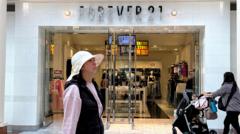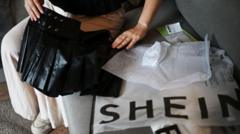In a significant turn of events, Forever 21, once a staple of fast fashion, has filed for bankruptcy protection as it grapples with an increasingly competitive retail landscape. The brand's operating company announced that while it enters this process, its physical stores and e-commerce site in the United States will remain open. The firm is now undertaking the challenging task of winding down operations.
Originally founded in Los Angeles in 1984 by South Korean immigrants, Forever 21 drew acclaim for its trendy, budget-friendly apparel aimed at young consumers. Its allure, however, has waned amid economic difficulties and rising prices, as well as the growing prevalence of online retail choices. Brad Sell, the company's chief financial officer, acknowledged the struggles in a statement, attributing the decline to fierce competition from abroad and escalating costs faced by its core customer base.
This move toward bankruptcy protection marks the second time the company has sought such relief, the first being in 2019 when it was acquired by a group of investors through a joint venture. The company is now planning liquidation sales at its stores, with the possibility of a court-supervised sale of assets. If successful, this might allow Forever 21 to redefine its business strategy rather than fully shutter.
It's important to note that Forever 21's international operations remain unaffected by this bankruptcy filing, as those are managed by separate license-holders. At its peak in 2016, Forever 21 boasted 800 stores globally, with 500 located in the US—its strongest market. Now, as the company navigates through these turbulent waters, the outcome will determine the future of a brand that once captivated a generation with its vibrant, affordable style.






















